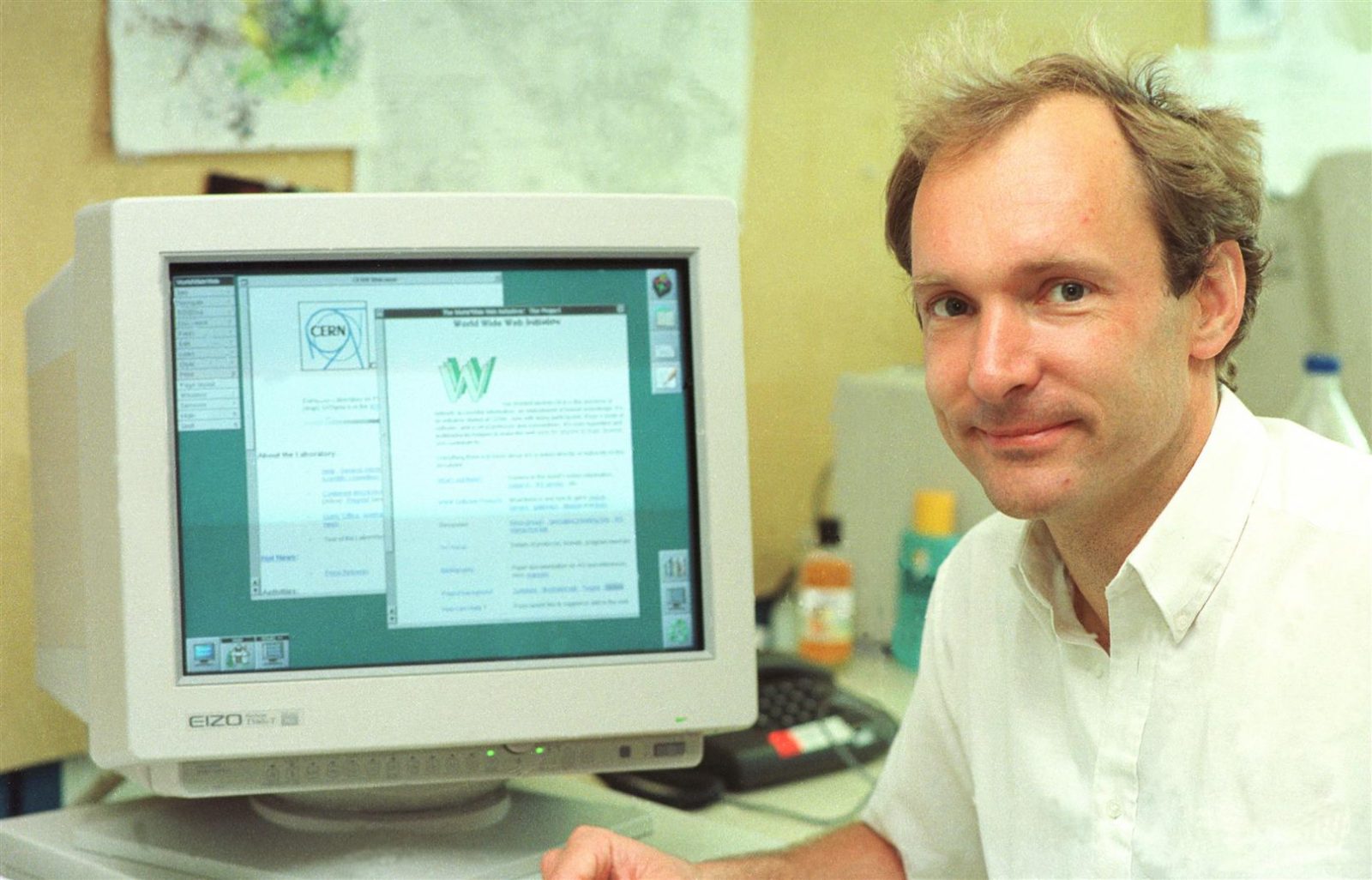
What Was the First Website? History of the First Website Ever
How fast time goes by, and things change so quickly!
Today, anyone can create his own website and tell the whole world about himself. But, just imagine – 30 years ago, there were no websites at all. Not a single one!
Finally, on December 20, 1990, one British scientist from the European Organization for Nuclear Research (CERN), whose name was Tim Berners-Lee, created and launched the first website in history (http://info.cern.ch).
The first homepage looked like this:

and this is what the first website in history looked like:

This pioneering website provided a detailed description of the World Wide Web – the new technology for global information exchange, based on the HTTP data transfer protocol, URL addressing system, and HTML hypertext markup language.
Now we will tell you everything about this epoch-making invention for mankind!
Contents
How and when was the World Wide Web created?
In 1989, Tim came up with a brilliant idea – and it eventually led to the creation of a global network for storing, processing and transmitting data – the Internet.
Initially, the scientist’s goal was to develop an innovative solution to help his CERN colleagues easily and quickly find and share data using one convenient platform.
Tim saw this as a system with free access to the source code for everyone, which should make the Internet an open and democratic platform at the initial stage of its development.
And from the very beginning, Tim had a clear idea of how the epic power of the Internet would radically change the world.
The young scientist presented his ingenious idea of a global communications system, which was called the “World Wide Web project,” back in 1989.
During this period, he developed (initially, exclusively for his own needs) and implemented the “Enquire” program. The program allowed you to access the necessary data using hypertext.
Tim invited CERN colleagues to work on a project and link parts of it with a hyperlink. The project was to make the work of scientists as convenient as possible: as planned, they could access the necessary information on the server with a single click of a button on the keyboard.
And this meant that the era of perpetual updating of information and the loss of precious time came to an end!
When the young man presented his idea to his superiors, he got a dry answer: “Vague, but interesting”.
The first website ever, http://info.cern.ch/, appeared on December 20, 1990. It was launched at CERN in Geneva, and it was created for public use within the organization.
Tim created it using the NeXT computer (or, more precisely, “NeXTcube”), which was designed by Steve Jobs himself!

The hardware characteristics of the webserver (it was the NeXTcube computer itself) may seem ridiculous today:
- Motorola 68030 (32-bit, 24 MHz) processor;
- 8-64 MB RAM;
- 330 or 660 MB hard drive;
- 256 Mb magneto-optical disk;
- 10Base-2 Ethernet network adapter.

It is worth noting that Tim Berners-Lee had excellent tools at his disposal that allowed him to complete this task in a couple of months, while it would take more than a year using the other platforms.
Everything necessary has already been created on NeXTcube: there was an application builder so that all menus could be made quickly, and all software elements for working in WYSIWYG (“what you see is what you get”) mode, allowing to see the results while designing). Tim only needed to add hypertext.
World Wide Web technology and the first web browser
WorldWideWeb allowed you to browse web pages, as well as edit and update them on sites. It was just a text web browser, capable of displaying only letters and numbers.
However, the world’s first browser supported FTP and TCP, the DNS system and allowed you to visit other Internet pages using hyperlinks. WorldWideWeb was created using the Objective-C programming language. Both the browser and its program code were fully accessible to everyone.
Also, the site explained some important technical nuances: the principles and procedures for installing browsers and servers and their operation, technical manuals for creating web pages and searching for information on the Web.
This was the very first and quite important step towards the emergence of a freely-accessible and large universe of documents.

What was the first world’s website interface?
Looking at how simple the interface of the first website was, one cannot help wondering about what progress web-design has achieved over these years!
The site created by Tim Berners-Lee did not yet have any computer graphics or multimedia – it was completely text-based.
However, Tim initially integrated the HTTP protocol and HTML language, so that subsequently, the site interface could display graphics, text formatting and clickable links, and even video and sound playback.
Certain sentences in the text on the pages of the site ended with sequence numbers taken in square brackets – these were the hyperlinks. To go to the other site section, the user had to enter certain numbers from the keyboard – from 1 to 45 (that was the number of links on the very first web page in the world).

The web page itself, naturally, could be scrolled up and down. To navigate the site, there was a command line.
Basically, even then, using the first website ever, CERN employees could easily visit any page, whether it is a book with the contacts of other employees or manuals on using computers of the organization. There was even a search that worked by entering keywords.
Today, the main page of http://info.cern.ch/ has the site map with its sections that are one mouse click away from the main page.



The first years of the Internet and the first sites launched after info.cern.ch
In August 1991, information on the concept of the World Wide Web was published in several well-known news online communities.
From this moment, leading European scientific institutions decided to join the innovative project and started to create web servers on the basis of their organizations, and then overseas colleagues joined them.

In 1993, the developers created free access to the source code of a hypertext project, which has already become famous. Following this, companies, organizations, and news agencies began to use innovative technology to create their own sites.



In the same year, “Mosaic”, the world’s first graphical browser appeared. By this time, according to Internet Live Stats, about 51 million websites could already be found on the World Wide Web.

Following this, the world saw the first versions of the sites of such well-known companies as Yahoo, Amazon, eBay, and then Google.
As for Tim Berners-Lee, he established his own World Wide Web Foundation, and by now he is the owner of the organization. The company specializes in the development and implementation of the newest Internet standards.

Unlike those old days, today you can create a website much easier, literally in a few hours. You can even do it without having special skills in web design and programming.
And since having a site is crucial for business, then why don’t you create your professional website with Weblium website builder for absolutely free today?!



